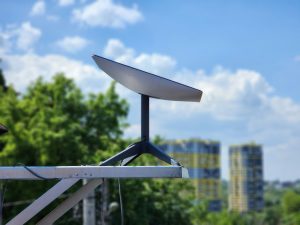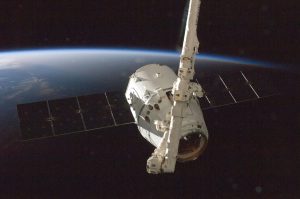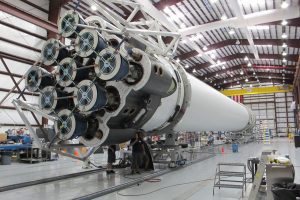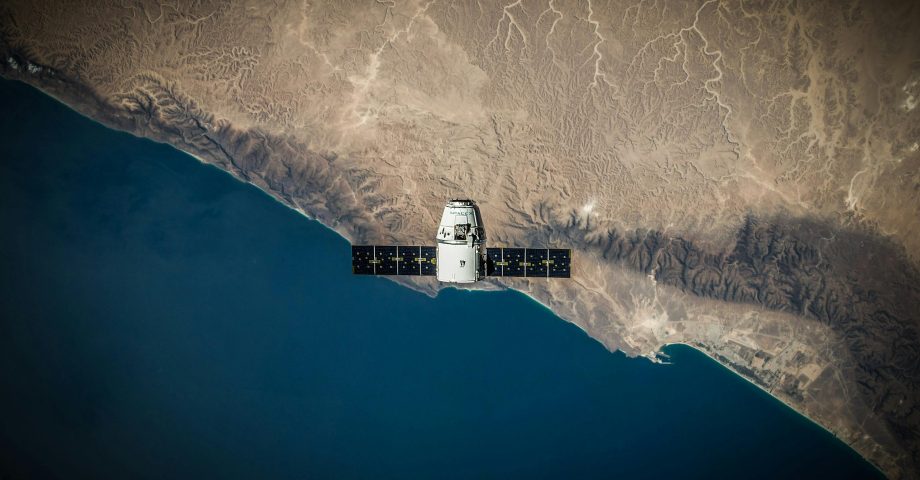If you’ve been following technology news closely over the past decade, there’s a pretty good chance you’ve heard about Starlink, a revolutionary series of satellites set up to help people access high speed internet from almost anywhere on the planet.
It’s the brainchild of the team behind SpaceX, owned by multi-billionaire entrepreneur Elon Musk – and its technology is already used by many people across the US and beyond. It’s received rave reviews in some cases, and concerns and criticism in others.
So, today, I’m going to take you through some fascinating facts about Starlink, what it’s all about, and how it could make a positive difference to a world that’s still not completely connected to the web. Let’s dive straight in.
1. Starlink is all about global coverage.
Starlink is a system or constellation of satellites set up to deliver internet access across the whole of the planet. That means it could, hypothetically, support even some of the globe’s furthest-flung places and rural spots where internet connectivity is sparse or even unheard of.
It specifically offers connectivity through low Earth orbit satellites, relying on fibre optics and other robust technology to transmit data – much like how satellites traditionally deliver radio signals.
And yes, it covers plenty of ground! It’s thought Starlink satellites can deliver services to more than 100 territories.
2. It’s an intricate system with several working parts.
Naturally, an ambitious project like Starlink has lots of technical working and moving parts that need to communicate with each other to offer a comprehensive, stable internet connection.
It’s set up so that stations based on Earth can communicate directly with each satellite, before the satellites then transfer data and connectivity back to people who are signed up for the Starlink service. If I’m making this sound simple, don’t be fooled – while Starlink is based on technology that’s decades old, it’s an immense undertaking all the same.
The service’s eventual aim is to support mobile broadband worldwide, too.
3. It’s linked to SpaceX, but is actually its own entity.
Starlink is just one of many entrepreneurial tech projects spearheaded by companies owned by Elon Musk, who is at the time of writing the richest person in the world. Specifically, it’s his space exploration company, SpaceX, that manufactures and launches Starlink satellites.
That said, SpaceX is purely a subsidiary of Starlink. It’s actually completely owned by its own unique operator, Starlink Services LLC.

4. Starlink satellites are designed to be relatively lightweight.
So that SpaceX’s rockets – specifically, the Falcon 9 – can launch Starlink satellites safely into space, said satellites are intentionally compact with a flat-panel manufacture. Each satellite is a dense object that cuts down on mass so it’s easy for deployment.
That said, these satellites are still pretty hefty by anyone’s standards. Each piece of hardware weighs around 1,760 pounds!
That’s a significant bulk increase from previous releases of the models, which weighed in at around 573 pounds. Thankfully, Space X Falcon 9 rockets can carry several in one load, meaning there shouldn’t ever be too many trips back and forth.
5. They last longer than you might think.
It’s easy to assume, on one hand, that Starlink satellites are just likely to stay up in orbit forever. This is hardly the case! In some cases, regular satellites eventually fall to Earth, burning up in the atmosphere.
The shelf life of a Starlink satellite is actually pretty generous. Each satellite launched usually lasts for about five years before it’s decommissioned. That means SpaceX needs to continue transporting and launching them over the years, so that customers can continue to receive coverage.
6. There are thousands of satellites.
Covering around 100 different territories, it’s reasonable to expect lots of Starlink satellites up in the sky. And, you wouldn’t be wrong – it’s thought that, in the long run, there will be around 42,000 different satellites orbiting the Earth, providing internet access to as many different areas around the world as possible!
At the time of writing, there’s said to be around 6,426 Starlink satellites in place, and most of these are fully operational.
7. It’s pretty easy to see if you can get Starlink coverage.
Starlink offers its own map, where you can see whether or not your area currently benefits from coverage – and if not, the service also advises where it intends to give coverage in the future. Worth planning ahead, therefore, if you’re fairly off-grid or in a remote spot.
Starlink advises that its connectivity is largely aimed at people living in areas where people cannot rely on stable internet access, or where they’ve simply been unable to access the web at all. This could, hypothetically, help people gain access to crucial information regarding natural disasters and medical emergencies.
8. It was initially announced back in 2015.
Starlink has been in the public knowledge since at least 2015, with the start of the year playing out SpaceX’s announcement that it would be placing up to 4,000 satellites into orbit.
That was then – now, it’s estimated that SpaceX and Starlink have permission to launch at least 12,000 satellites. SpaceX, of course, has designs on sending many more into the stratosphere, and has applied for the permission to launch.
9. The satellites have concerned some people involved with astronomy.
Anyone who’s keen on stargazing might not find Starlink to be too hot a proposal. In fact, the International Astronomical Union, or IAU, released a statement in the summer of 2019 which raised concerns over satellites causing a “threat to important existing and future astronomical infrastructure”.
One of the major concerns regarding Starlink’s gradual “filling up” of space around Earth is that it could cause conditions akin to light pollution, and even brighten up the sky unnaturally.
The IAU, in particular, has requested that satellite makers work with bodies and people active in astronomy regarding any future projects.

10. The satellites used by Starlink and SpaceX were first devised in the 1980s.
While the technological advancements proposed by Starlink are certainly new to us all, low Earth orbit satellites have actually been around for around 30 years or more. In fact, they were first devised as part of the ongoing Strategic Defense Initiative in the 1980s.
What’s interesting, however, is that most entities investing in low Earth orbit satellites have gone out of business, largely thanks to the costs of launching such equipment. SpaceX, however, has endured, and has continued to pump money into its projects to get Starlink up and running.
11. Starlink wasn’t the project’s original name.
Musk had originally started devising a 700-satellite constellation under the name of WorldVu, which he’d set up with Greg Wyler.
After these proposals went no further, SpaceX took up the application and licensed the Starlink name in 2016.
12. Starlink’s name is inspired by an interesting source.
Believe it or not, Starlink isn’t named after an entity in science fiction, nor is it a portmanteau of words. It’s actually said to have been inspired by “The Fault In Our Stars”, the John Green novel.
Interestingly enough, the name of that was inspired by William Shakespeare’s play “Julius Caesar”!

13. It’s thought that Starlink hasn’t been activated over Taiwan for a reason.
Starlink’s relationship with Taiwan appears to be a tricky one. In late 2024, journalists for the Wall Street Journal reported that SpaceX mogul Elon Musk had discussed Starlink with Vladimir Putin, then-leader of Russia.
The Journal reported that Putin had allegedly requested Musk to avoid activating any Starlink satellites over Taiwan, largely to appease China’s leader Xi Jinping.
It’s also been reported that, allegedly, SpaceX has requested several suppliers based in Taiwan to move production overseas. This was met with outcry in Taiwan, where, as of the time of writing, Starlink remains inactive.
14. Starlink’s satellite goals are pretty huge – when you look at the numbers in perspective.
The numbers I’m quoting for Starlink are impressive in and of themselves – however, by the end of autumn 2022, only short of 14,500 satellites had ever been launched, with around 6,800 being active.
That means, doing the maths, Starlink could have an interesting monopoly in the skies – with the project arguably becoming the most successful and indeed ambitious launch project in satellite provisioning history.
15. The satellites launched to a bright surprise.
SpaceX’s first Starlink satellites hit the sky in May 2019, leading to a bright, dazzling display that reportedly caught even SpaceX engineers off-guard! Many people who were already keen stargazers found ways to watch the launch happen, as 60 initial satellites headed into orbit.
However, this initial display wasn’t met with praise or excitement from everyone. In fact, at the time of launch, many people were worried that the sheer brightness of the new Starlink chain would affect the images and data sent back by telescopes and observatories.
Not only that, but experts in radio astronomy have shown concerns over how the satellites will interfere with signals across the sky.

16. There are millions of people already connected to Starlink.
Believe it or not, while Starlink might sound like emerging technology, there are already more than four million people subscribed to the service at the very least. That, however, has been something of a meteoric rise!
As of spring 2021, the service had fewer than 100,000 customers – by December 2022, that had grown to one million, with the number doubling by September 2023, and doubling again by November 2024.
17. Starlink could be set to conquer dead zones with a leading phone network.
As mentioned, Starlink and SpaceX have designs on branching out into mobile broadband – and they appear to be partnering with cellular giants T-Mobile to eradicate America’s mobile dead zones.
In particular, it’s said that T-Mobile will consider using 4G devices to connect via Starlink, and that there will be a limited speed of up to 4MB per second. This is a limited scope, but in the name of providing phone access where there previously was none at all, it’s likely to be met with fervent interest!
18. Starlink could also be used to track missiles.
Yes, believe it or not, SpaceX’s technology has received the go-ahead to track hypersonic and ballistic missiles. This initial raft of satellites launched officially in 2023, two and a half years after SpaceX won the contract.
Beyond this, Starlink has also led to the development of Starshield, a device that specifically supports military and government bodies. This, according to Musk, is part of Starlink becoming a “civilian network”.

19. Starlink isn’t widely available across all territories yet.
Although Starlink is active in 100 territories and SpaceX has designs on the satellites becoming usable around the world, at the time of writing, it’s unavailable in large chunks of the globe – though its reach is still impressive!
As of the time of publication, Starlink is available across Europe, much of Oceania, North America, and South America. However, it is yet to be fully accessible across Asia and much of Africa.
That said, it’s obtained licenses to operate in territories such as Ghana, Samoa, Qatar, Vanuatu, South Sudan, Botswana, and Fiji as recently as 2024 – meaning new countries are still being approved for launch all the time.
19. You can even access Starlink on board certain flights.
Thanks to innovations made by Boeing, travellers on Qatar Airways flights from Doha to London on 777s can access Starlink directly on board during journeys. It’s the first approved Boeing 777 flight to benefit from onboard Starlink access, with the hope being it might lead the way for future innovations.
20. Users have specific terminals they use to connect to the satellites.
Starlink differs even further from its rival services in the way users are able to connect up. Specifically, instead of using phones or other handsets to connect directly to satellites, Starlink uses a midpoint option – a flat-shaped user terminal.
These terminals initially cost $499 in the US on a beta testing system. It operates as an antenna of sorts, meaning users can connect via them to gain direct access to Starlink’s internet provided from above.

21. There’s some concern regarding satellites crashing.
The sheer number of Starlink satellites up in the sky has raised legitimate concerns over what happens if one or more collide with each other, or if they collide with rival satellites or other services.
SpaceX has ensured that its satellites will move if a collision is likely within a certain distance and has propellant technology set up if such scenarios are likely to take place. Reassuringly, it’s been reported that less than five collision detection manoeuvres have been activated.
Experts, however, are also worried that the Starlink build-up could lead to a long-term problem called Kessler Syndrome – where satellites colliding could lead to a cascade.
22. You can see Starlink satellites without a telescope.
It’s true! Starlink satellites are so bright, you can often see them with the naked eye. You might see them on occasion if, when looking up, you notice strings of bright lights moving together in the sky.
It’s thought that it gets harder to see Starlink satellites as their orbit time increases, simply because they are increasing in distance away from the Earth.
23. Musk has referred to the project as a long-term, life-changing deal.
Upon revealing the initial details for Starlink back in 2015, before anything official was cemented, Elon Musk claimed that the new project would effectively be like “rebuilding the internet in space” over the long term.
And, he’s not far off! Though the ubiquitousness of the satellites has concerned people in the astronomy community, the widespread devices will likely do plenty to connect rural and disconnected people to the web for the first time.

Starlink FAQs
Is Starlink faster than 5G?
Believe it or not, 5G is technically faster than Starlink, mainly thanks to the number of wavelengths it has packed in. This allows for more data-intensive activities to take place over shorter periods of time. However, the main selling point behind Starlink is that it can deliver fast broadband access to areas that are otherwise completely without it.
What’s the major downside of Starlink?
Some people are concerned that the brightness and sheer volume of satellites in the Starlink network could cause astronomical issues. Beyond this, there have been concerns that the ever-moving nature of the satellites means there are likely to be dead spots for connectivity – because they can get obstructed while moving.
Is Starlink faster than basic WiFi?
That all depends on the speed of basic WiFi you’re referring to! Different ISPs have varying connectivity speeds – and on the whole, 5G is technically faster than Starlink due to wavelength density. That said, depending on your area and the lack of any obstructions between you and the satellites, you might find Starlink works faster than your basic broadband.
Further reading
https://www.starlink.com/us/technology
https://findstarlink.com/
Do you know any interesting facts about Starlink? Share them in the comments below!










